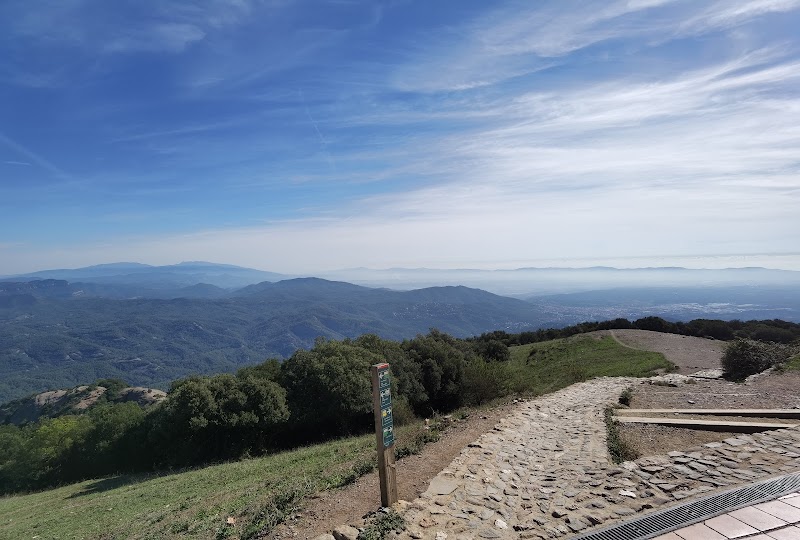
Running Through History: The Barcelona Marathon Experience
The Barcelona Marathon delivers a unique urban adventure that merges athletic challenge with rich cultural encounters. Discover the best timing, course insights, and tips to maximize your race day experience across one of Europe’s most spirited cities.
Hydrate Strategically
Use the designated hydration stations but consider carrying a light hydration pack for flexibility, especially if you prefer your own electrolyte mix.
Choose Breathable, Supportive Footwear
The marathon’s terrain mostly consists of pavement with occasional cobblestones. Shoes with firm midsole support and good ventilation will optimize comfort and reduce injury risk.
Start Early for Best Weather
The race begins at dawn to take advantage of cooler Mediterranean mornings. Plan to arrive early to acclimate and avoid crowds.
Plan Transportation and Accommodation Nearby
Stay in approachable areas like Eixample for walkable access to start lines, recovery zones, and public transit hubs to minimize stress on race day.
Running Through History: The Barcelona Marathon Experience
Barcelona Marathon offers more than a test of endurance; it’s a full-on urban adventure carved into the heart of Catalonia’s vibrant capital. Spanning 42.195 kilometers, the course threads through a city that pulses with culture, history, and Mediterranean vitality. Expect mostly flat terrain with select gentle elevations, ideal for both first-timers chasing a personal best and savvy veterans aiming for a smooth race. Your journey begins near the iconic Plaça d'Espanya, with the city’s architecture standing as an unyielding companion, offering photos at every corner.
The streets themselves hold stories, daring you to push ahead. Wide avenues lined with palm trees and historic landmarks form the marathon’s backbone, while the sea breeze from nearby Barceloneta challenges your breath, reminding you of nature’s presence in this urban run. The course offers striking views of Montjuïc’s green slopes and seafront expanses, pulling you into a rhythm that balances excitement with pragmatic pacing.
Timing is crucial—the race starts early morning in March or April, securing cooler temperatures and softer wind conditions. Hydration stations pepper the route every 5 kilometers, but bringing your own hydration belt is a wise backup. Footwear with firm support and breathability will help you absorb the changing pavement textures, from historic cobbles to smooth asphalt.
Public transport access is excellent; stay in nearby districts like Eixample or Gràcia for easy pre-race logistics and post-run relaxation. After crossing the finish line, the energy spills into local festivals and recovery spots serving Catalan cuisine—think fresh seafood and revitalizing horchata.
For those eyeing a more tactical approach, pacing yourself across the beachfront stretch near Port Vell can conserve energy ahead of the final kilometers through the Gothic Quarter, where narrow streets temper your pace with sudden shifts and turns. Barcelona’s marathon isn’t just a race—it’s a lively dialogue with a city fiercely itself, inviting runners of all levels to engage with its unique pulse and spirit.
Nearby Trips
All Adventures
Boat Charters
Water Activities
Adventures near Barcelona, Catalonia
Discover the unique and memorable adventures that make Barcelona, Catalonia special.
Frequently Asked Questions
What makes the Barcelona Marathon course unique compared to other city marathons?
The course blends historic architecture with Mediterranean coastal views. Unlike many city marathons that stick strictly to flat roads, Barcelona’s route features subtle elevation changes around Montjuïc, providing a scenic challenge without overwhelming runners.
Are there recommended neighborhoods to stay in for easy marathon access?
Yes. Eixample and Gràcia offer walkable access to start lines with plenty of amenities. These neighborhoods combine quiet streets for rest with vibrant dining options for recovery meals after race day.
How populated is the marathon route, and does it affect pacing?
The event attracts over 20,000 runners, but the wide roads like Avinguda Maria Cristina help disperse the pack. Peak congestions occur in narrow sectors near the Gothic Quarter, where adjusting pace to surroundings is crucial.
What local wildlife might I spot during the marathon?
While the route is urban, you might glimpse pigeons, sparrows, and occasional seagulls, especially near the beachfront. Montjuïc’s gardens nearby teem with butterflies and lizards, a quiet reminder of nature’s firm hold even in the city.
Are there any environmental considerations I should be aware of when participating?
Barcelona Marathon organizers focus on sustainability, promoting waste reduction and recycling. Runners are encouraged to use refill stations rather than disposable bottles to limit plastic waste.
Is the course suitable for wheelchair participants?
Yes. The route is mostly accessible with gradual inclines and smooth surfaces on main stretches, accommodating wheelchair racers and athletes with mobility aids.
Recommended Gear
Running Shoes with Good Support
Provides cushioning and stability on a mix of asphalt and cobblestone surfaces found throughout Barcelona's marathon route.
Lightweight Hydration Belt
Allows flexible hydration beyond official stations, critical in maintaining steady fluid levels in changing temperatures.
Breathable Running Apparel
Keeps the runner cool and dry during the marathon’s early spring weather conditions.
Sunscreen
Protects from UV rays during long exposure, especially when the sun rises mid-race.
Local Insights
Hidden Gems
- "Mirador de l'Alcalde (Montjuïc viewpoint offering panoramic city views)"
- "The underground Roman ruins beneath Plaça del Rei"
- "El Cap de Barcelona sculpture near Port Vell"
- "Jardins de Laribal on Montjuïc"
Wildlife
- "Mediterranean seabirds near the coastline"
- "Urban birds such as pigeons and swifts"
- "Small reptiles inhabiting garden areas of Montjuïc"
History
"Barcelona’s marathon route weaves through centuries-old districts dating back to Roman times, passing landmarks like the Gothic Quarter and Montjuïc Hill, which was a strategic military site and now a cultural hub."